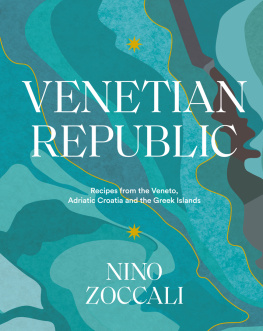THE ANCIENT ITALIAN PROVINCE OF Venetia is of interest to us in the present inquiry as the source to which the first Venetians looked as the home of their fathers or of their own youth. It was a region of Northern Italy, which extended from the foot of the Alps to the Adriatic Sea; but its boundaries seem to have undergone changes. After its subjugation by the Romans, Venetia was considered as forming part of Cisalpine Gaul. The people are described as a commercial, rather than a warlike, community; and it is a curious circumstance that they displayed in their dress, like their insular descendants, a predilection for black. An immense amount of confusion has arisen in the accounts of this country and its inhabitants by a failure to discriminate with proper care between the Veneti of America and their Adriatic namesakes. The former were remarkable for their proficiency in martial pursuits and their brave resistance to the Roman legions and navy; yet it is at the same time questionable whether the trade in amber conducted by Greeks and Phoenicians between Western Europe and the Baltic does not really belong to the Transalpine Veneti, who are also more likely to be the people among whom Herodotus relates that it was a custom to sell their marriageable daughters by auction.
There seems to be some plausibility in the suggestion that a colony passing in the course of migration from their native soil to Asia Minor, proceeded thence, in process of time, to Northern Italy, on the shores of which they formed numerous settlements. These colonists were called Tyrrhenians or Etruscans; they became the founders, at successive periods, of Spina at the mouth of the Po, and Hadria or Hatria in its vicinity, both of which attained the highest degree of commercial prosperity. No vestiges of the former are now visible, though the name may seem to have survived in the islet of Spinalunga, a later alluvial formation. The gradual deposits of nature have had the effect of removing Hadria to a distance of more than fourteen miles from that sea on which it once stood, and which still bears its namethe Hadria iracunda of Horace. Nor has the decline been recent; for even in the time of the Romans these places presented little more than the shadow of their pristine greatness.
In the Augustan age Venetia and Istria united to form the Tenth Legion; under Constantine, the two districts were reckoned as the seventeenth province of Rome. Venetia itself was divided, during the reign of the latter prince, into Prima and Secunda or Maritima, the last of which had long been known to the conquerors as the Gallicae Paludes. Venetia Maritima appears to have been bounded on the east by the Adriatic, on the north by the Julian Alps, on the west by an imaginary line drawn between the Adige and the Po, and on the south by the latter river.
The inclining plain of Northern Italy, which verges continually toward the sea, is irrigated by several rivers. Of these, the Livenza and Isonzo take their rise in the Alps; the Brenta, the Musone, the Piave, and the Adige in the Tyrol; while the Po, after receiving the tributary waters of the Alps and the Apennines, disembogues in the Adriatic at its western angle. That the strength and vehemence of the currents of these several streams would be greatly increased by the sloping nature of the country through which they flow, is sufficiently obvious; and it will also be easy to conceive the process by which, in their passage to the gulf, the force of the tide would loosen and remove the sand and mud accumulated on their shores, and deposit it as sediment at their respective confluences, which lay within a short distance of each other. This fluviatile drift, which served to attest the active and unrestricted operations of nature in that quarter, naturally assumed, in the course of ages, the form of mounds, or lid, while many acquired a degree of size and solidity which entitled them to the name of islands. The final result which was to be expected, however, from this large formation of new and artificial soil close to the terra firma, was that the whole intermediate expanse of morass, or lagoon, would have been girt by an unbroken belt of sand, and that an extensive tract of country would have been permanently reclaimed from the ocean; and this, indeed, was only obviated by the estuaries which along the upper coast of Northern Italy were created by the frequent confluence of opposite currents, and which, by a series of winding and deep channels, divided the lid at irregular intervals, at the same time affording a certain access to the wide and terraqueous tract which had now interposed itself between the true shore and the exterior margin of the Adriatic.
It was on these narrow strips of land, ill sheltered from the waves, yet by them only protected, of which it might have appeared that man would hardly care to dispute possession with the sea-fowl, that a few hundred stragglers, exiles from their native soil, were driven, in the fifth century of our era, by the force of adversity, to seek a temporary home; and on this unique site the fugitives laid the foundations of the proud and powerful Venice, by erecting here and there a few huts of mud and osiers.
In the singular encroachment of the land upon the water which was to be observed in the conformation of the Venetian lagoons, and the slow creation of a firm soil, where before there had been nought but liquid expanse, it was not unnatural for the men of that time to see an evidence of preparation for things that were to come. The remarkable changes which had taken place during the lapse of ages in that part of the coast might well seem to a less incredulous age than ours to point to the distant contemplation of a City of Refuge in the midst of the waves.
We are told by Strabo that in his day the country immediately contiguous to the Gulf of Adria was intersected in every quarter by rivers, streams, and morasses; Aquileia and Ravenna were then cities in the marshes; and it appears probable that, had not the inroads of the sea been checked by a circumvallation of dykes, the whole region would have presented the aspect of a salt-lake.
The climate of ancient Venetia was generally tepid, occasionally chilly. In the spring, the atmosphere was gratefully tempered by the sea-breezes; during the summer, the frequent recurrence of storms cleared the air, and deluged the plains; snow was rare and transient. The soil was rich and fertile: it was composed of ashes, dust, and bitumen, varied at certain levels by layers of salt. Salt also formed, with honey oil, fish, and wine, the staple commodities of the country.
After the successive fall of Spina and Hadria, three other cities, which had remained down to that time in comparative obscurity, acquired in their turn prominence and celebrity. Of these the most conspicuous in wealth and in industry was Aquileia. This place continued, for some length of time, to hold the first rank among the cities of Northern Italy. The river and maritime commerce of the Aquileians was equally considerable. Their traders penetrated by the Danube to Goritz and Belgrade, and perhaps even to Byzantium and the Roman colonies on the Cimmerian Bosporus and the Black Sea. The Po, the Tagliamento, the Livenza, the Adige, and the Brenta were covered with their carooes and freights. Their port was regarded as the general emporium of that part of the peninsula.









